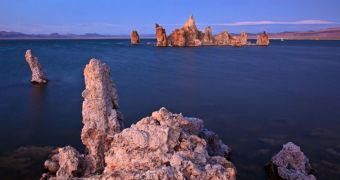The effects of global warming are beginning to make themselves felt more and more at locations around the world, and the continental United States are no exception. Recent satellite measurements have determined that the surface temperature of lakes in California and Nevada is spiraling out of control, mostly due to human activities that generate large amounts of carbon dioxide.
The gas acts like a screen, preventing the heat in the atmosphere that would otherwise dissipate back into space from escaping. This leads to a vicious cycle, which is continuously made worse by the fact that more and more pollution makes its way into the air each year. Additionally, fossil-fuel power plants and vehicles consume industrial amounts of coal, oil and natural gas, and produce even more carbon dioxide, which again rises into the atmosphere.
In a new study, conducted by experts at the American space agency, NASA, it was revealed that some of the largest lakes in California and Nevada were also beginning to experience the effects of this generalized warming. Their surface temperatures have increased considerably over a very short period of time, experts at the Jet Propulsion Laboratory (JPL) announce in a press release. The lab manages many space missions for the NASA Science Mission Directorate, and is, in turn, managed by the California Institute of Technology (Caltech), in Pasadena.
Lake Tahoe, Mono Lake, Pyramid Lake, Walker Lake, Lake Almanor, and Clear Lake were the main targets of the new investigation, which was conducted using datasets from NASA’s Terra and Aqua satellites, and from the European Space Agency's (ESA) series of Along-Track Scanning Radiometers. The American space agency used the Moderate Resolution Imaging Spectroradiometer instruments on its two satellites for the job.
“The results found that between 1992 and 2008, the average nighttime temperatures of these lakes during the months of July, August and September increased at an average rate of 0.11 Kelvin (0.2 degrees Fahrenheit) per year. Results were validated against direct, ground measurements made at Lake Tahoe, on the California/Nevada border. Such rapid warming is expected to have a significant impact on lake ecosystems,” the JPL team concludes.

 14 DAY TRIAL //
14 DAY TRIAL //